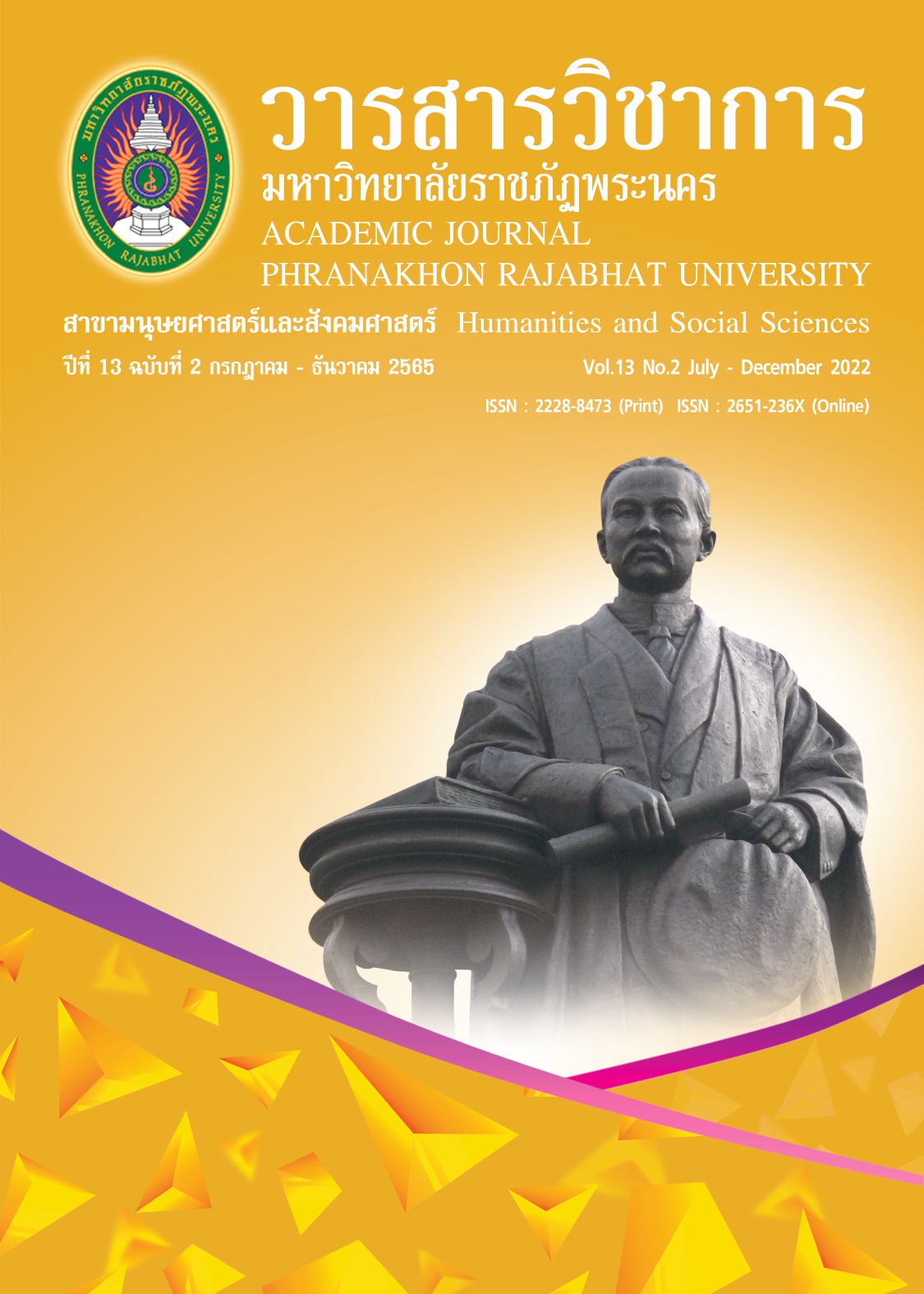POSITIVE PSYCHOLOGICAL CAPITAL UNDER NEW NORMAL OF STUDENT TEACHERS IN THE FACULTY OF EDUCATION PHRANAKHON SRI AYUTTHAYA RAJABHAT UNIVERSITY
Keywords:
Positive Psychological Capital, New normal, Confirmatory Factor AnalysisAbstract
The purposes of this research were: 1) to study confirmatory factor of the positive psychological capital under New Normal of student teachers in the Faculty of Education Phranakhon Sri Ayutthaya Rajabhat University, and 2) to test the consistency of the positive psychological capital model of student teachers in the Faculty of Education Phranakhon Sri Ayutthaya Rajabhat University. The target group used in the research was all student teachers studying in the first year of the academic year 2021, Faculty of Education, Phranakhon Si Ayutthaya Rajabhat University, from 9 disciplines, totaling 223 students. The research instruments were the positive psychological capital under New Normal scale confirmatory factor analysis and the consistent test of the positive psychological capital by using Mplus 6.12.
- 1. The factor of positive psychological capital under new normal of student teachers in the Faculty of Education Phranakhon Sri Ayutthaya Rajabhat University consisted of 4 factors according to priority of factor loading as follows: Resilience (.939), Hope (.902), Optimism (.861) and Self-Efficacy (.837).
- 2. The model for measuring positive psychological capital under new normal was correlated with the empirical data at the statistical significance level of .05 x2 (1, n=222) = 1.172, p = .279, CFI = 1.000, TLI = .997, SRMR=.010, RMSEA = .028) and component weights in the standard score from 0.837 to 0.939 were statistically significant for all components.
References
Damrongpanit, S. (2012). MPLUS Program and Behavioral and Social Sciences Data Analysis. Mahasarakham : Mahasarakham University. (In Thai)
Hu, L.T. & Bentler, P.M. (1999). Cutoff criteria for fit indexes in covariance structure analysis : Conventional criteria versus new alternatives. Structural Equation Modeling, 6(1), 1-55.
Jackson, D. L. (2003). Revisiting Sample Size and Number of Parameter Estimates: Some Support for The N:q Hypothesis. Structural Equation Modeling, 10, 128-141.
Kittipraphat, S. et al. (2020). Social impacts from the coronavirus disease 2019 (COVID-19) outbreak and the economic crisis. Office of the Permanent Secretary. Ministry of Social Development and Human Security. (In Thai)
Kline, R. B. (2011). Principles and practice of structural equation modeling (3rd ed.). New York : Guilford Press.
Luthans, F. et.al. (2007). Psychological Capital. New York : Oxford University Press .
McCray, J .,& Joseph-Richard, P (2020). Towards a model of resilience protect : Factors influencing doctoral completion. Higher Education, 1-21.
Ministry of Higher Education Science Research and Innovation . (2021). Announcement of the Ministry of Higher Education, Science, Research and Innovation on Relaxation and Relaxation Measures for Surveillance of the Coronavirus Infectious Disease 2019 No. 13 : Practices of Higher Education Institutions and other departments within the ministry to prevent the spread of COVID-19. Retrieved from http://mhesi.go.th/index.php/content_page/ item/3033-2019-covid-19-1-6.html. [2022,20 May.]
Nelson, D.L., & Cooper, C.L. (2007). Positive Organizational Behavior. London : Sage Publications.
Sakulsriprasert, C. (2013). Confirmative component analysis. Journal of Clinical Psychology, 44(1), 1-16. (In Thai)
Sakunpong, N. et al. (2016). Resillence as a mediator between positive psychosocial factors, psychological well-being, and depression among patients with major depressive disorder. Journal of Health Science Research, 15(2), 138-149. (In Thai)
Schumacker, R. E.,& Lomax, R. G. (2010). A beginner’s guide to structural equation modeling. (3rd Edition). New Jersey: Lawrence Erlbaum Associates.
Snyder, C.R. & Lopez, S. (2002). Handbook to Positive Psychology. Oxford, UK : Oxford University Press.
Sompong, S. (2018). "Advantages-Disadvantages"!"Machorn"Opens online education system. Phra Nakhon Si Ayutthaya: Mahachulalongkornrajavidyalaya University. Retrieved from https://siampongsnews.blogspot.com/2018/04/blog-post_84.html. [2022,12 Apr.] (In Thai)
Steiger, J.H. (2007). Understanding the limitations of global fit assessment in structural equation modeling. Personality and Individual Differences, 42(5), 893-898.
Sookawong C. (2017). Capital Development in Positive Psychology of Higher Education Students. Doctor of Philosophy Department of Educational Psychology and Guidance Mahasarakham University. (In Thai)
Wiratchai, N. (2012). Confirmatory Factor Analysis. Journal of Research and Curriculum Development, 2(1), 68-74. (In Thai)
Downloads
Published
How to Cite
Issue
Section
License
Copyright (c) 2022 Academic Journal Phranakhon Rajabhat University

This work is licensed under a Creative Commons Attribution-NonCommercial-NoDerivatives 4.0 International License.
"บทความวิชาการในวารสารฉบับนี้ ถือเป็นความรับผิดชอบของผู้เขียนเท่านั้น"
สงวนลิขสิทธิ์ตามพระราชบัญญัติลิขสิทธิ์




